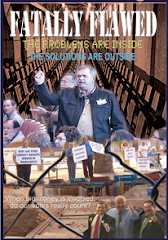The author of this Democratic Underground journal collects compelling historical evidence that violence blamed on labor unions is initiated by employers and the government.
By McCamy Taylor
Wed Apr 08th 2009, 07:13 PM
If asked What was (or is) the longest running U.S. war? most people would say the conflict in Southeast Asia. However, in this journal I will make a case that our federal government’s longest war has been the one waged against workers, both here and abroad, who attempt to obtain a decent wage and safe work conditions. Since this battle began during the very first national strike back in 1877, it is a Hundred Year War .
Many other so called “wars” like the War Against Black Folks (aka the War on Drugs) are actually part of this largest conflict, since racial minorities are oppressed in this country in order to depress all wages. The current right wing War Against Immigrants is also a skirmish in the Hundred Year War, designed to keep Mexican immigrants living in fear, so that they will accept low pay and poor work conditions. Women are denied a fair wage for the same reason. Divide and Conquer has become a favorite strategy of the business class, because the one thing that workers have going for them is strength in numbers. If they can be pitted against each other, then they will lose--- and the bosses will win.
Do not be fooled by the seemingly milder, more law abiding behavior of the nation’s business owners in recent years. Employers in the United States have been at war with their workers for a very, long time, and their allies in the battle have been (except for a few years during the FDR administration) our own elected officials.
I. “A Diet of Lead for the Hungry Strikers”: The Railroad Strike of 1877
Sometimes it just amazes me how (bad) history keeps repeating itself in the United States. You would think that we would learn from our mistakes.
Bush v. Gore was not the nation’s only fixed election. Way back in 1876, the president of the largest company in the United States, Thomas Scott, of the Pennsylvania Railroad, crafted a deal in which the man who got fewer votes----Rutherford Hayes---was elected president. In exchange, Scott got federal bailouts for bad investments in the Texas and Pacific Railroad. The cost of this bailout was high---Hayes supporters courted Southern Democrats in Congress by promising to end Reconstruction, effectively abandoning Southern Blacks to a century of Jim Crow and the KKK. In that election and its aftermath, the foundations for United States policy towards American workers were laid. That policy was, in a word, war.
The nation’s economy was in a shambles. Investors had been up to their usual dirty tricks. In 1869, Black Friday was precipitated by two investors, Gould and Fisk who conspired with family members of then President Grant to corner the gold market and drive up prices. When gold prices returned to normal, many investors were ruined. A few years later, gold was in the news again, as the feds stopped buying silver thanks to the Coinage Act of 1873, also called the Crime of 1873. Domestic money supplies were reduced. Also in 1873, the major investment firm Jay Cooke & Company went under due to its bad investments in the nation’s railroad industry. The New York Stock Exchange closed for 10 days. Railroads failed----and it was the American worker who suffered the most as the nation entered the Long Depression. Read the rest of the journal at Democratic Underground
CD One Candidate Conor O’Callaghan Appears on Symone
-
With Arizona Congressional District One a major battleground in the 2024
elections (the incumbent, David Schweikert won by less than a point in
2022,) Demo...
2 years ago
















